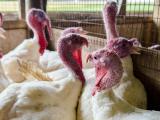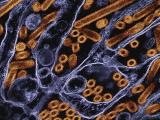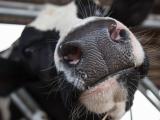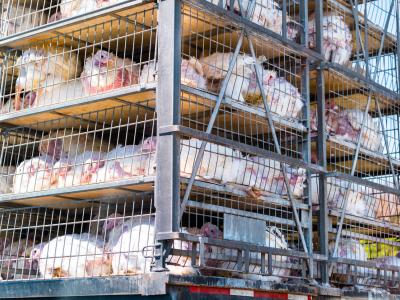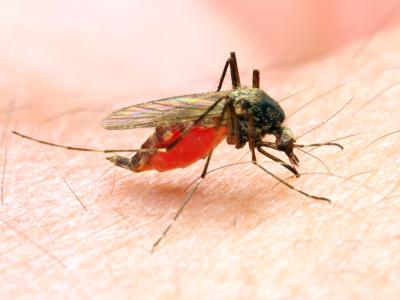Apr 13, 2013 (CIDRAP News) – China today reported the first H7N9 influenza infection in a contact of an earlier confirmed case, along with four other new cases, bumping the country's illness total from the new virus to 49.
The flurry of new confirmations are all from eastern China, where most of the H7N9 infections have been reported, except for a case confirmed in Beijing earlier today, that of a 7-year-old girl whose father works in the city's live-poultry trade.
In addition, new case developments and scientific findings prompted the World Health Organization (WHO) today to issue its first risk assessment for the virus, which noted two possible family clusters, though so far it's unlikely that the novel virus can spread through humans in community settings.
The close contact who is sick is a 56-year-old man from Shanghai whose wife died from H7N9 flu on Apr 3, according to a report from Xinhua, China's state news agency. The report, citing a statement from the country's National Health and Family Commission, said there is no evidence that the man acquired the virus from his wife.
According to earlier reports, the man's wife was one of the early case-patients and died in Shanghai after she was hospitalized late in her illness. The Chinese doctors who treated her described her illness in the first case report of an H7N9 infection, which appeared in a recent issue of Emerging Microbes and Infections.
She had no clear contact with live poultry, but the virus was detected in poultry at a local market. Her doctors said the most likely source of the virus was the environment or food contaminated with the new virus.
Close-contact infections can occur from common environmental exposure or from human-to-human contact, and detailed investigations are needed to confirm the human transmission element. Yesterday the US Centers for Disease Control and Prevention (CDC) said that it's likely that some limited human-to-human spread would occur in China's H7N9 outbreak, a pattern seen with other viruses, including H5N1 avian flu.
Global health officials look for ongoing, sustained human-to-human transmission as a signal that would trigger heightened pandemic risk assessments.
The other newly confirmed cases are in two patients from Jiangsu province and two from Zhejiang province, according to an update today from the WHO. The patients from Jiangsu are a 72-year-old man and a 77-year-old woman, and those from Zhejiang are a 65-year-old man and a 38-year-old man.
The illness-onset dates range from Apr 1 through Apr 6, according to the WHO.
Hong Kong's Centre for Health Protection (CHP) also listed the new cases in its update today and added that four patients from Jiangsu and Zhejiang provinces are in critical condition. It acknowledged the Shanghai man's family connection to the earlier case but did not list his condition. The CHP also said the 7-year-old girl from Beijing is in stable condition.
The WHO update also included the case of the 7-year-old Beijing girl, who got sick on Apr 11 and is still hospitalized. In an Apr 10 Twitter post, the WHO said an extension of the geographic area would be a more noteworthy development than simply a change in the number of cases.
More than a thousand close contacts of confirmed cases are being monitored closely, and so far no evidence of ongoing human-to-human transmission has been found, the WHO said.
Until the source of the virus is identified, more H7N9 infections will likely be reported in China, the agency said.
All influenza network labs in China's 31 provincial regions now have the capacity to test for the H7N9 virus, Xinhua reported yesterday.
The WHO is urging people in the affected Chinese provinces to avoid unnecessary contact with animals, especially in live-bird markets and said that people can reduce their risk of infection by eating well-cooked food, including chicken and other poultry products.
WHO issues first risk assessment
In its risk assessment on China's H7N9 outbreak, the WHO said two confirmed cases have been linked to family clusters in which one and two additional family members, respectively, became ill with severe pneumonia.
Close contacts are being monitored, the agency said, and so far no samples that have undergone polymerase chain reaction (PRC) testing have been found positive for the virus.
Gene sequencing and lab analysis from the first three human H7N9 isolates suggests that H7N9 contains genes from three different avian influenza viruses, that the new virus shows changes that boost its ability to infect humans and other mammals, that more than one introduction from animals to humans may have occurred, and that the virus is likely to be sensitive to neuraminidase inhibitors, the most commonly used antiviral drugs.
Key questions revolve around the animal reservoir, how humans are becoming infected, and the scope and spread of the virus in humans and animals, the WHO said.
It acknowledged that the virus has been isolated from poultry, including ducks, and in pigeons in live-bird markets in some parts of China. The agency added, however, that the involvement of wild birds, domestic animals, or other mammals such as pigs isn't clear.
It's likely that most of the human infections have links to infected undetermined animals, and more human infections are expected, the WHO said.
Limited human-to-human transmission of H7N9 may occur in close-contact situations, such as in families or in healthcare settings, and already-concerning genetic signs of adaptation to mammals raise the possibility that further adaptation could occur, according to the WHO.
Regarding the risk of international spread, the WHO said it's possible that travelers could spread the disease to another country, but if the virus can't sustain human-to-human transmission, extensive community spread is unlikely. The group added that it does not advise screening at country entry points or any travel or trade restrictions.
See also:
Apr 13 Xinhua story
Apr 10 Emerg Microb Infect case report
Apr 13 WHO update
Apr 13 CHP statement
WHO Twitter feed
Apr 12 Xinhua story
Apr 13 WHO risk assessment

